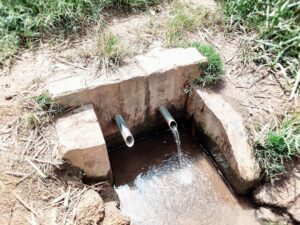Wildfire Devastates California Town
The devastating wildfire that swept through the region began on a scorching summer day, when a combination of dry weather, high winds, and human activity created the perfect conditions for a fire to ignite. It is believed that the fire was sparked by a discarded cigarette or a campfire that was not properly extinguished. The dry vegetation and strong winds quickly fueled the flames, causing the fire to spread rapidly and uncontrollably. As the fire grew in intensity, it quickly engulfed the surrounding area, threatening homes, wildlife, and the delicate ecosystem. The initial response from local authorities was swift, but the ferocity of the fire made it difficult to contain, and it soon became clear that this would be a long and arduous battle.
The fire quickly spread across acres of land, consuming everything in its path. The thick smoke and intense heat made it difficult for firefighters to get close enough to the flames to effectively combat the fire. As the fire raged on, it became clear that it would take a coordinated effort from multiple agencies and communities to bring it under control. The start of the fire was a stark reminder of the destructive power of nature and the importance of being vigilant and responsible in preventing wildfires. It also served as a wake-up call for the community, highlighting the need for better preparedness and prevention measures to mitigate the impact of future wildfires.
Key Takeaways
- The fire started in a remote area and quickly spread due to high winds and dry conditions.
- Evacuation orders were issued, and rescue efforts were hampered by the fast-moving nature of the fire.
- The wildfire had a devastating impact on wildlife and the surrounding ecosystem, with many animals and habitats destroyed.
- Homes and infrastructure suffered significant damage, with many structures being completely destroyed by the fire.
- The community rallied together to support those affected by the wildfire, providing shelter, food, and other forms of assistance.
- Long-term recovery and rebuilding efforts will be necessary to restore the affected areas and communities.
- Prevention and preparedness measures are crucial for mitigating the impact of future wildfires, including fire-resistant building materials and early warning systems.
Evacuation and Rescue Efforts
As the fire continued to spread, local authorities issued evacuation orders for residents in the affected areas. The rapid spread of the fire and the unpredictable nature of wildfires made it necessary for residents to leave their homes and seek safety elsewhere. The evacuation efforts were complicated by the sheer scale of the fire and the limited resources available to assist residents in leaving the area. Many residents were forced to leave behind their belongings and cherished possessions as they fled from the advancing flames.
In addition to the evacuation of residents, there were also extensive rescue efforts to save wildlife that had been displaced by the fire. Animal rescue organizations and volunteers worked tirelessly to locate and rescue injured and stranded animals, providing them with much-needed care and shelter. The evacuation and rescue efforts were a testament to the resilience and compassion of the community, as neighbors came together to support one another in a time of crisis. Despite the challenges and hardships faced during the evacuation and rescue efforts, there was a sense of unity and determination among those affected by the fire, as they worked together to ensure the safety and well-being of all those impacted.
Impact on Wildlife and Ecosystem
The wildfire had a devastating impact on the local wildlife and ecosystem, causing widespread destruction and displacement. The intense heat and flames destroyed habitats and food sources for many species, forcing them to flee to safer areas or perish in the fire. The loss of vegetation also had a cascading effect on the ecosystem, disrupting food chains and altering natural processes. In addition to the immediate impact on wildlife, there were also long-term consequences for the ecosystem, as it would take years for the land to recover from the damage caused by the fire.
The destruction of habitats and displacement of wildlife also raised concerns about the long-term survival of certain species in the area. Endangered and threatened species were particularly vulnerable to the effects of the fire, further exacerbating conservation efforts in the region. The impact on wildlife and the ecosystem served as a sobering reminder of the interconnectedness of all living things and the fragility of natural environments in the face of natural disasters. It also underscored the need for proactive measures to protect and preserve wildlife and their habitats in order to ensure their survival in the wake of such catastrophic events.
Damage to Homes and Infrastructure
| Location | Number of Homes Damaged | Infrastructure Damage |
|---|---|---|
| City A | 500 | Several roads and bridges |
| City B | 300 | Power lines and water pipes |
| City C | 700 | Public buildings and schools |
The wildfire caused extensive damage to homes and infrastructure in the affected areas, leaving many residents without shelter or basic necessities. The intense heat and flames consumed entire neighborhoods, reducing homes to ashes and leaving behind a trail of devastation. In addition to homes, critical infrastructure such as power lines, roads, and water systems were also damaged by the fire, further complicating recovery efforts. The widespread destruction of homes and infrastructure left many residents feeling overwhelmed and uncertain about their future.
The damage caused by the wildfire also had economic repercussions for the community, as businesses were forced to close and residents were unable to work due to the impact of the fire. The loss of homes and livelihoods added an additional layer of hardship for those affected by the fire, as they struggled to rebuild their lives in the aftermath of such a catastrophic event. The damage to homes and infrastructure served as a stark reminder of the vulnerability of human settlements in the face of natural disasters, highlighting the need for resilient building practices and infrastructure that can withstand such events in the future.
Community Response and Support
In response to the devastation caused by the wildfire, the community rallied together to provide support and assistance to those in need. Local organizations, businesses, and individuals came together to offer food, shelter, and supplies to those who had been displaced by the fire. Volunteers worked tirelessly to provide aid and comfort to their neighbors, demonstrating an outpouring of compassion and solidarity in the face of adversity. The community response was a testament to the strength and resilience of those affected by the fire, as they banded together to support one another during this difficult time.
In addition to immediate relief efforts, there was also an outpouring of support from neighboring communities and organizations, who offered assistance in various forms to help with recovery and rebuilding efforts. The generosity and kindness shown by others served as a source of hope and encouragement for those impacted by the fire, reminding them that they were not alone in their struggle. The community response and support demonstrated the power of unity in overcoming adversity, as people from all walks of life came together to lend a helping hand to those in need.
Long-term Recovery and Rebuilding

The road to long-term recovery and rebuilding was a daunting task for those affected by the wildfire, as they faced numerous challenges in restoring their lives and communities. The process of rebuilding homes and infrastructure was slow and arduous, requiring significant resources and support from various agencies and organizations. Many residents struggled with insurance claims and financial burdens as they sought to rebuild their homes and businesses from the ground up. The long-term recovery efforts also included addressing emotional trauma and providing mental health support for those who had experienced loss or displacement as a result of the fire.
In addition to physical reconstruction, there was also a focus on restoring natural habitats and ecosystems that had been impacted by the wildfire. Conservation efforts were implemented to help rehabilitate wildlife populations and promote regrowth of vegetation in affected areas. The long-term recovery and rebuilding process was a test of resilience for the community, as they worked tirelessly to overcome obstacles and rebuild their lives in the wake of such a devastating event.
Prevention and Preparedness for Future Wildfires
In light of the destructive impact of the wildfire, there was a renewed focus on prevention and preparedness for future wildfires in the region. Community leaders, local authorities, and residents came together to develop comprehensive wildfire prevention plans, including measures such as controlled burns, vegetation management, and public education campaigns on fire safety. There was also an emphasis on improving early warning systems and emergency response protocols to ensure a swift and coordinated response in the event of future wildfires.
In addition to prevention measures, there was also an increased emphasis on building resilient infrastructure and homes that could better withstand wildfires. Building codes were updated to include fire-resistant materials and designs that could help mitigate damage from future fires. The focus on prevention and preparedness for future wildfires underscored the importance of proactive measures in mitigating the impact of natural disasters on communities and ecosystems. It also served as a reminder of the need for ongoing vigilance and collaboration in addressing environmental challenges in order to build more resilient communities for future generations.
If you’re interested in spot news, you may want to check out this article on Perth English’s website about the latest developments in the local community here. This article provides up-to-date information on current events and breaking news in the Perth area, keeping you informed about what’s happening in your community. Whether it’s a newsworthy event, a significant announcement, or an important update, this article will keep you in the loop with the latest spot news.
FAQs
What is spot news?
Spot news refers to the coverage of events that are happening right now or have just recently occurred. It often involves breaking news, such as accidents, fires, crimes, and other unexpected events.
How is spot news different from other types of news?
Spot news is different from other types of news in that it focuses on the immediate reporting of events as they happen. It is often characterized by its urgency and the need for quick and accurate reporting.
What are some examples of spot news events?
Examples of spot news events include natural disasters, terrorist attacks, political upheavals, and other sudden and unexpected occurrences that require immediate reporting.
How do journalists cover spot news events?
Journalists cover spot news events by quickly gathering information from eyewitnesses, officials, and other sources, and then reporting on the event as it unfolds. This often involves on-the-ground reporting and live updates.
Why is spot news important?
Spot news is important because it provides the public with timely and relevant information about events that are happening in their community or around the world. It helps people stay informed and make decisions based on current events.



